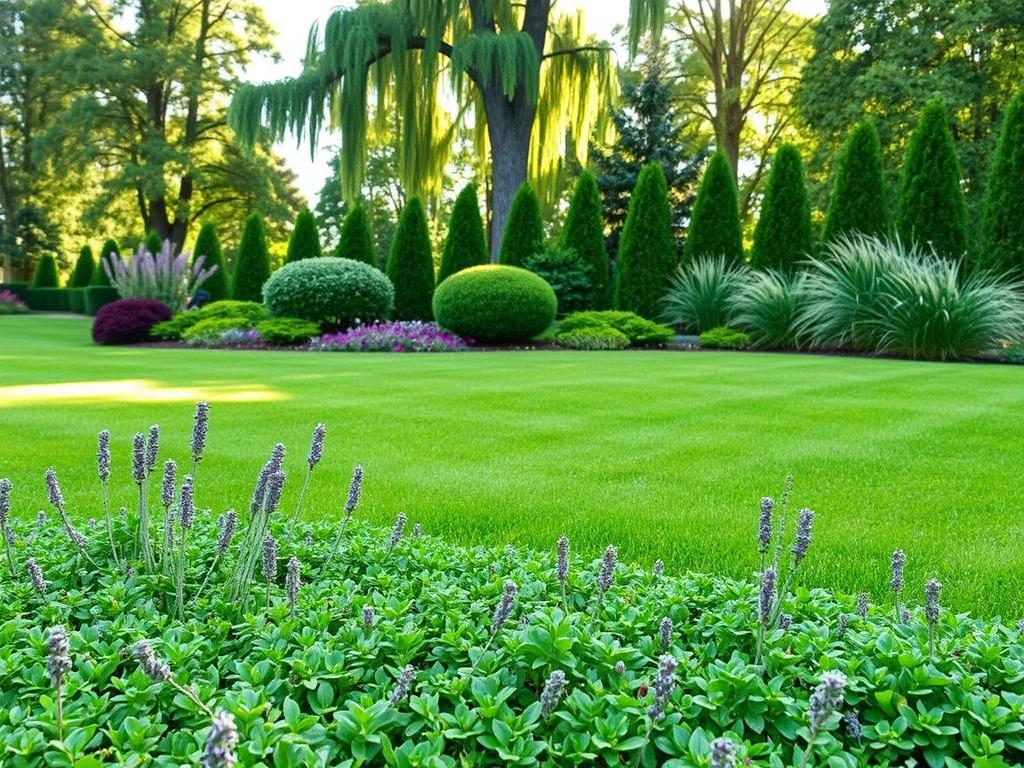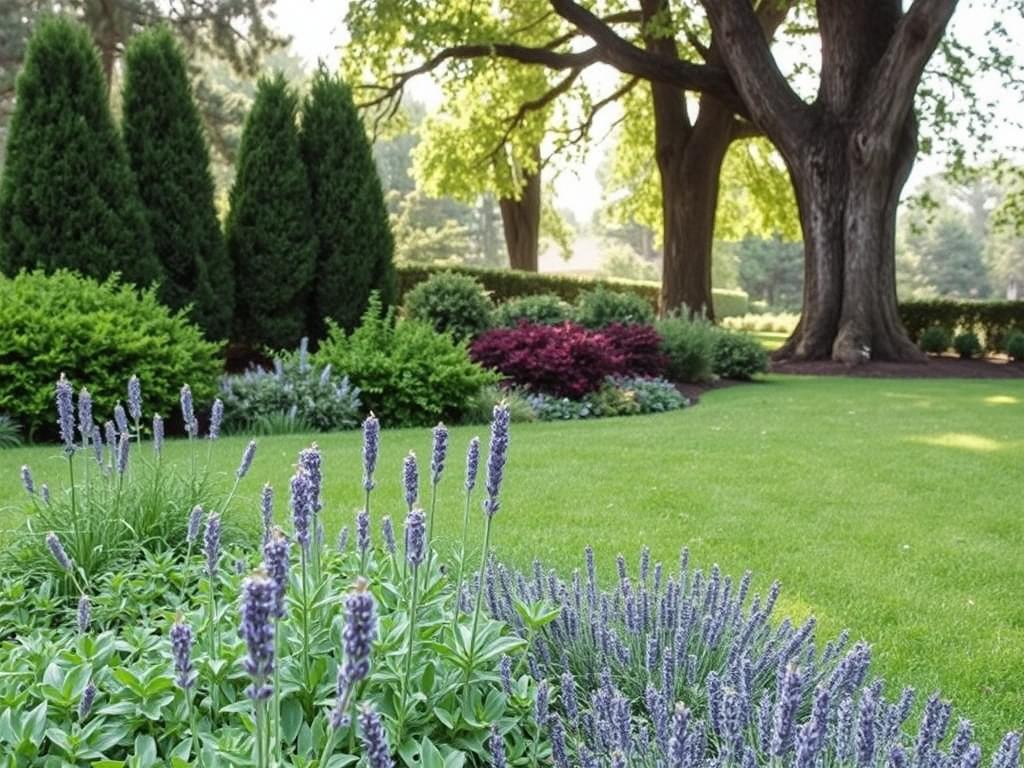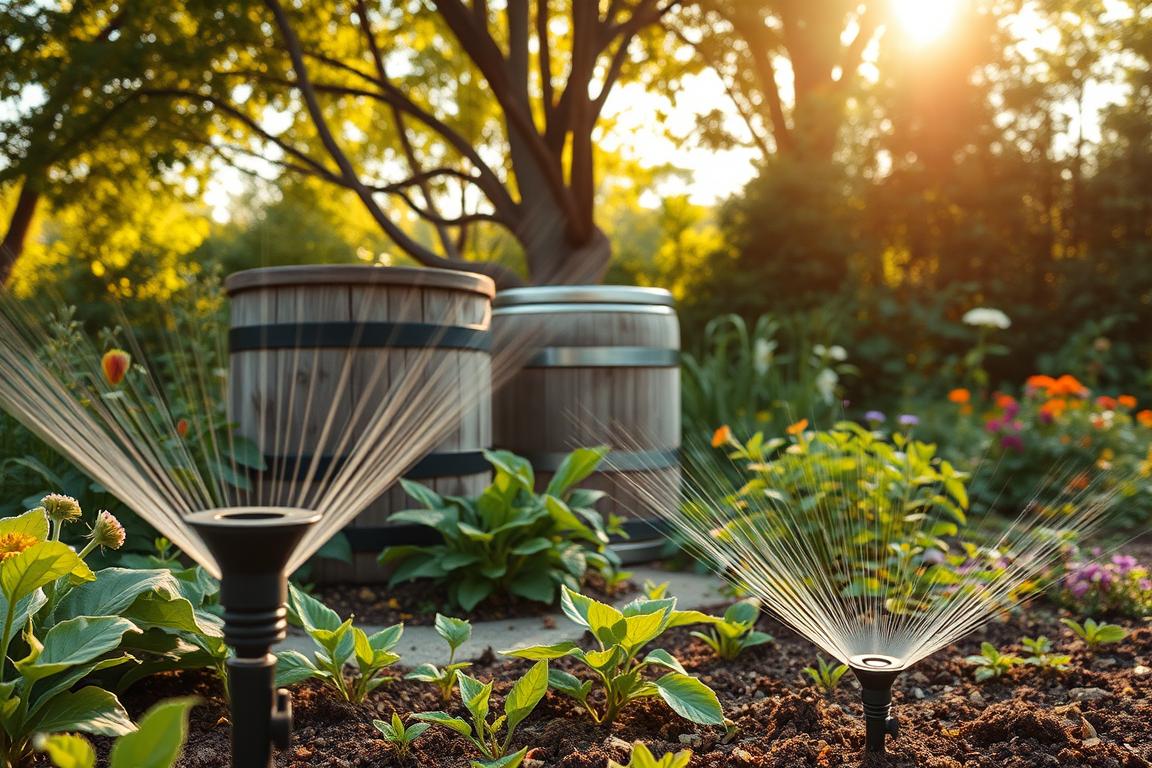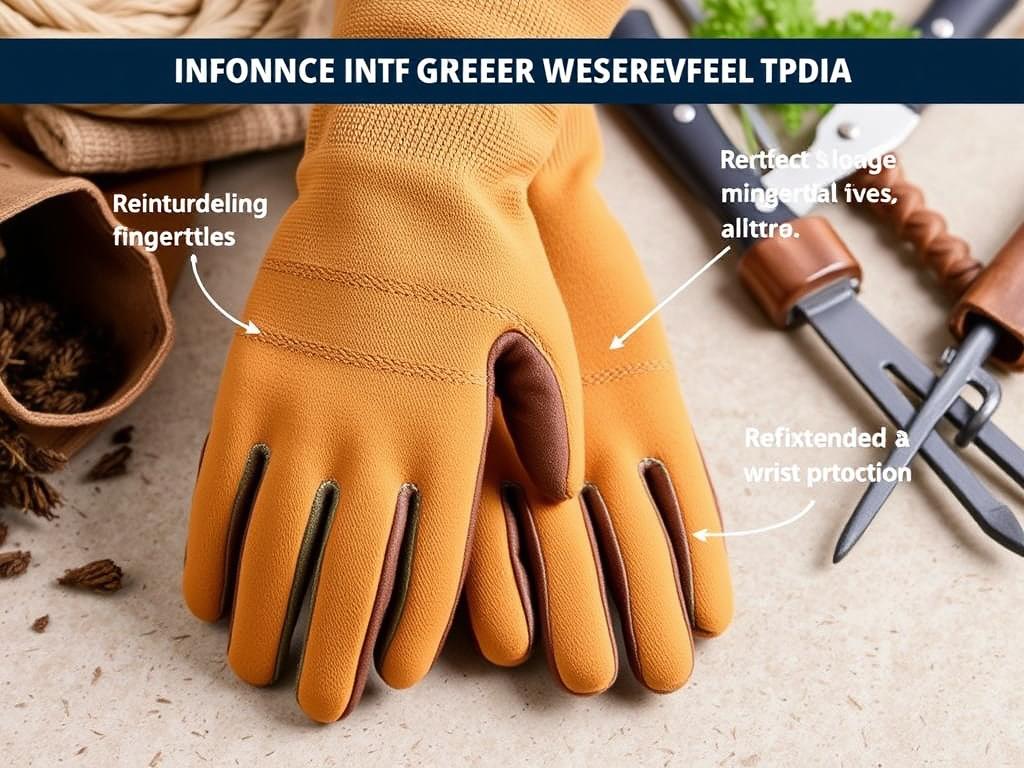Spotting a snake in your yard can ruin a peaceful afternoon. Most snakes are harmless, but their presence can still cause worry. We’ve mixed Utah State University’s wildlife research with field-tested tips to help you keep snakes away.
Effective snake management starts with knowing what attracts them. Overgrown plants, clutter, and rodents make your lawn a snake buffet. Our tips focus on simple changes that make your yard less appealing without harming nature.
We’ve found four key ways to keep snakes away: changing your yard’s habitat, controlling food sources, creating barriers, and regular maintenance. You’ll learn about plants that repel snakes and improve your yard’s look. We’ll also show you how common yard items might attract snakes.
Remember: Getting rid of all snakes isn’t possible or good for nature. Our aim is to live in harmony with snakes through landscaping that keeps them away. Let’s make your yard a place where you can relax, and snakes just pass by.
Why Snakes Love Your Yard (And How to Change Their Minds)
Your lawn might seem perfect to you, but snakes see it as a luxury resort. Knowing why they come helps us make your yard less welcoming. Let’s figure out what attracts them and how to make your yard less appealing.
Meet Your Uninvited Guests
Backyard snakes can be either helpful or harmful. Knowing the difference is key to snake mitigation.
Non-Venomous Species: Garter Snakes & Rat Snakes
These snakes help control pests but can still scare people. Look for:
- Round pupils (like a cat’s eyes)
- Single row of belly scales
- Slender bodies under 4 feet
Utah State University Extension notes 85% of residential snake sightings involve harmless species.
Venomous Varieties: Copperheads & Rattlesnakes
These snakes are dangerous and need caution. Watch for:
- Vertical, elliptical pupils (like a fox)
- Triangular heads with heat-sensing pits
- Distinctive diamond or hourglass patterns
LawnStarter’s identification chart helps spot common venomous snakes in your area.
Your Property’s Secret Snake Perks
Snakes aren’t picky; they follow basic needs. Remove these three things, and they’ll leave for good.
Overgrown Vegetation = Perfect Hiding Spots
Tall grass and dense shrubs offer snakes cool, shaded spots. Keep your grass short and trim plants 12+ inches from your house.
Rodent Populations = Snake Buffet
One mouse family can feed a snake for weeks. Lowe’s pest experts say reducing rodents cuts snake visits by 68%.
Water Sources & Damp Areas = Hydration Stations
Leaky hoses and clogged gutters attract snakes. Fix these issues and let the soil dry between waterings to keep snakes away.
By fixing these issues, you can make your yard a snake deterrent that works with nature. Next, we’ll look at maintenance tips to keep your yard snake-resistant.
Snake-Proof Your Lawn Through Strategic Maintenance

To keep snakes away, focus on yard upkeep. This means removing hiding spots and food sources. Here are three key steps to make your yard less appealing to snakes.
Mowing Like a Pro
Short grass is a snake’s worst nightmare. Keep your grass under 2 inches tall, as Utah State University suggests. This height stops snakes from hiding in shaded spots.
Create 24-inch clearance around structures
Keep plants away from buildings. A 24-inch gap around sheds, decks, and fences stops snakes from sneaking up on your home.
Debris Control Tactics
Wood piles and clutter are snake magnets. Lowe’s found that moving wood piles at least 50 feet from your house cuts down on rodents and snakes.
- Stack firewood in sealed metal bins with tight lids
- Clear fallen branches within 10-20 feet of buildings
- Store gardening tools off the ground
Moisture Management Essentials
Damp areas attract frogs and slugs, which snakes love. Fix leaky faucets quickly to avoid puddles. For wet spots:
“French drains redirect water flow effectively, creating drier conditions that discourage amphibious prey.”
Install French drains in soggy areas
These trenches filled with gravel move water away. Combine them with proper soil grading to keep your yard dry and snake-free.
Plant Choices That Naturally Deter Snakes

Your garden can do more than look good—it can keep snakes away. By picking plants that repel snakes, you make your yard a snake-free zone. Here are three ways to use plants to keep snakes out.
Fragrant Herbs They Hate
Snakes use their sense of smell to find food. So, plants with strong smells can confuse them. These herbs act as a natural barrier around your property.
Lemon Balm Around Patio Edges
Plant lemon balm in clusters near where you sit. Its scent confuses snakes and keeps them away. Plus, it keeps mosquitoes off in the summer.
Garlic Clusters Near Foundation
Snakes don’t like the smell of garlic. Plant garlic bulbs around your home to keep them away. Lowe’s says mixing garlic with pepper makes it even more effective.
Prickly Landscape Defenders
Uncomfortable plants can stop snakes from moving through your garden. These plants are like natural barriers.
Holly Bushes Under Windows
Holly bushes have sharp leaves that snakes don’t like. Plant them 2-3 feet apart under windows to keep snakes out. They also add greenery all year.
Rose Bushes Along Fence Lines
Rose bushes are pretty and keep snakes away. Pick disease-resistant types and prune them to keep thorns sharp.
Essential Oils in the Garden
Plant extracts can make your garden even safer. These methods need to be refreshed often.
Cinnamon Oil-Soaked Mulch Barriers
Make a spicy barrier by mixing cinnamon oil with mulch. LawnStarter says use 10-15 drops per square yard. Reapply after rain. It smells bad to snakes and good for your soil.
Clove Oil Spray on Walking Paths
Mix clove oil with water (1:4) and spray garden edges. It creates a barrier that smells like holiday spices to you but scares snakes. Spray it weekly when snakes are most active.
Physical Barriers That Actually Work
Transforming your property into a snake-free zone is possible with the right defenses. We’ll look at three effective methods that use science and practicality. No magic spells needed here.
Snake Fencing 101
36-inch tall hardware cloth installation is your first defense. Utah State University Extension suggests using 1/4″ mesh from Lowe’s. It blocks young snakes and withstands weather.
Install it with:
- Posts spaced 6-8 feet apart
- Buried base for underground protection
- Rust-resistant galvanized steel
Bury 6 inches underground with outward angle
Angle the bottom 6″ outward at 30 degrees. This makes it hard for snakes to dig and climb. One homeowner said:
“After installing angled fencing, we’ve had zero snake sightings for two seasons straight.”
Gravel Zones for Defense
Crushed granite is more than just for driveways. It’s a natural barrier against snakes. The sharp edges hurt their bellies, making them think twice.
3-inch deep crushed granite perimeter
Make a 12″-wide barrier around your home’s foundation. Unlike mulch, this gravel layer:
- Drains quickly
- Resists compaction
- Lasts 5-7 years with minimal upkeep
Rough-textured lava rock near sheds
Use jagged lava rocks around storage areas and AC units. They’re too sharp for snakes and too heavy for rodents to burrow through.
Sealing Entry Points
Snakes can fit through tiny spaces. Our foundation protection strategy blocks these sneaky paths.
Concrete filler for foundation cracks
Use hydraulic cement for gaps wider than 1/4″. It expands as it cures, sealing gaps tight. Check these spots annually:
- Where pipes enter the house
- Crawl space vents
- Garage door thresholds
Door sweeps with rubber seals
Install heavy-duty sweeps that stay in place. Look for models with:
- Aluminum reinforcement
- Replaceable vinyl inserts
- Weatherproof adhesive strips
Natural Repellents Worth Trying
Using nature’s tools can help keep snakes away without using harsh chemicals. These eco-friendly methods work best when you also take care of your yard and choose smart landscaping. Let’s look at three natural ways to keep your property snake-free.
Vinegar Solutions
Household vinegar is a quick fix for areas where snakes are common. Its strong smell bothers snakes, making them less likely to go there.
1:1 water/vinegar spray for fences
Mix equal parts white vinegar and water to make a barrier. Spray it on fences and foundation edges every week. Reapply after rain to keep it working.
Soaked rags near potential entry points
Put vinegar-soaked cloths in gaps or vents. Change them every 3-4 days as the smell wears off. This method is best for short-term use during peak snake seasons.
Predator Urine Applications
Snakes don’t like areas that smell like predators. Products like PredatorPee from trusted brands last longer than DIY solutions.
Coyote urine granules monthly refresh
Use these odorless pellets around your property’s edges. They smell when wet. LawnStarter experts suggest reapplying every 30 days for ongoing protection.
Fox urine spray near compost areas
Use liquid formulas to deter snakes from compost piles. Spray it around food waste. For even better results, control rodents too.
Vibration Tactics
Vibrations that feel like big predators scare snakes. New devices make it easy to use this method without loud noises.
Solar-powered ground vibrators
These devices send vibrations into the ground every 30 seconds. You can find them at Lowe’s. They protect a 20-foot area without bothering people.
Low-frequency wind chimes
Put deep-toned metal chimes in gardens or near ponds. The vibrations and sounds they make scare snakes away.
While these natural methods are promising, using them with physical barriers and changing your yard can help more. Always check if they work and adjust your plan as the seasons change.
Removing Snake Attractants Completely
To make your yard less appealing to snakes, remove things that attract them. Snakes are drawn to rodents, birdseed, and unsecured pet food. Let’s look at how to remove these attractants effectively.
Rodent Elimination Program
Snakes are attracted to their food source. Utah State University found that properties with mice have 5x more snake activity. Our rodent control strategy works all year:
Snap traps baited with peanut butter
Place these along fences and shed walls. The crunchy texture mimics insect prey, doubling effectiveness.Monthly pest control service schedule
Professionals target nests before populations boom. Ask providers about snake-deterring rodenticides.
Bird Feeder Best Practices
Those cheerful chickadees could be inviting trouble. Follow USU’s guidelines to avoid accidental snake invitations:
Use seed catchers on all feeders
Mesh trays reduce spillage by 80%. We like No-Mess Seed Hopper models.Clean spilled seed within 24 hours
A handheld vacuum makes quick work of sunflower hulls under feeders.
Pet Food Storage Solutions
Outdoor feeding stations need military-grade security. Lowe’s best-selling pet food storage items help:
Airtight containers with locking lids
Metal bins prevent raccoon raids and mask food smells.Outdoor feeding station cleanup routine
Wipe surfaces with vinegar after meals – it removes scent trails snakes follow.
Consistent sanitation practices break the cycle. When snakes find no food sources, they’ll seek greener pastures elsewhere. Stay vigilant through seasonal changes – a clean yard today keeps serpents away tomorrow!
Conclusion: Your Snake-Free Oasis Awaits
To keep snakes away, mix smart landscaping with regular care. We’ve shown you how to do it – from choosing the right plants to using barriers. It’s all about making your yard less appealing through design and upkeep.
Preventing snakes long-term means knowing why they come. Remove their food, like rodents, and seal up crawl spaces. Also, keep your grass short. Use natural repellents like lemongrass or gravel barriers for extra safety.
Follow checklists from places like the National Wildlife Federation. Clean up your yard seasonally and check your fences. Watch for snakes and change your plan if needed – like adding more marigolds or refreshing vinegar sprays.
Your hard work will make your outdoor space safer for years. Tell your neighbors about your efforts to spread the word. Got questions? Ask us below – we’re ready to help make your yard a safe haven.
FAQ
Q: How can I identify common snakes in my yard?
A: Look at pupil shapes and scale patterns! Most non-venomous snakes in Utah (83% according to Utah Extension) have round pupils. Venomous species like rattlesnakes have vertical slits. Check for triangular heads and heat-sensing pits near nostrils as additional clues.
Q: Does overwatering really attract snakes?
A: Absolutely. Excess moisture attracts frogs, slugs, and worms—snake prey favorites. Lowe’s recommends watering deeply but infrequently to avoid creating damp habitats. Pair this with proper yard grading to prevent puddling near foundations.
Q: What grass height deters snakes best?
A: Utah State University advises keeping lawns at 3-4 inches. Taller grass provides hiding spots, while shorter lengths reduce cover. We combine this with their firewood storage tip: stack wood 12” off the ground and 24” from structures using Lowe’s metal racks.
Q: Can plants really repel snakes?
A: A> Yes! Lemongrass masks prey scents with its citrusy aroma, while holly’s spiky leaves create physical barriers. For oils, Lowe’s suggests mixing 10 drops clove + 15 drops cinnamon oil per gallon of water, applied weekly around perimeter plants.
Q: What’s the best snake-proof fencing?
A: Utah Extension recommends 36” tall hardware cloth angled outward at 30°. Bury 6” deep and use 3/4” crushed granite (not mulch) around the base—its sharp edges deter burrowing. Seal gaps wider than 1/4” with expanding foam.
Q: Do vinegar solutions work against snakes?
A: Temporarily. While vinegar’s acidity disrupts scent trails, rain washes it away quickly. We prefer commercial predator urine products (coyote/fox) reapplied monthly. For tech solutions, solar vibrators outperform mothballs—their underground pulses mimic larger animals.
Q: How fast should I clean up birdseed spills?
A: Utah Extension’s 24-hour rule is crucial. Rodents swarm spilled seeds fast, creating snake buffets. Use metal containers with locking lids (never plastic) for birdseed and pet food. Pair this with quarterly rodent inspections around sheds and garages.
Q: Will gravel alone keep snakes away?
A: It’s part of a system. While 3/4” crushed granite deters digging better than mulch, combine it with trimmed vegetation and debris-free zones. We layer gravel under elevated woodpiles and around AC units where snakes seek shade.
Q: How often should I apply essential oil repellents?
A: Reapply every 7-10 days or after heavy rain. Lowe’s tested formula uses 1 oz oil mixture per 10 linear feet. Focus on entry points like gate thresholds and crawlspace vents. Always wear gloves—the strong scents irritate human skin too!
Q: Do snakes return to the same areas yearly?
A: Only if attractants remain. Snakes follow rodent population cycles, so breaking the food chain is key. Implement metal trash cans, rapid leaf removal, and our 3-zone landscaping plan (clean perimeter → defensive plants → gravel buffer) for lasting results.






